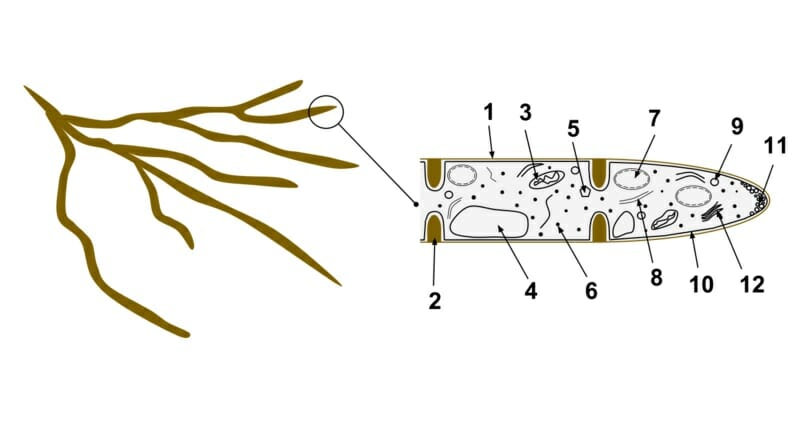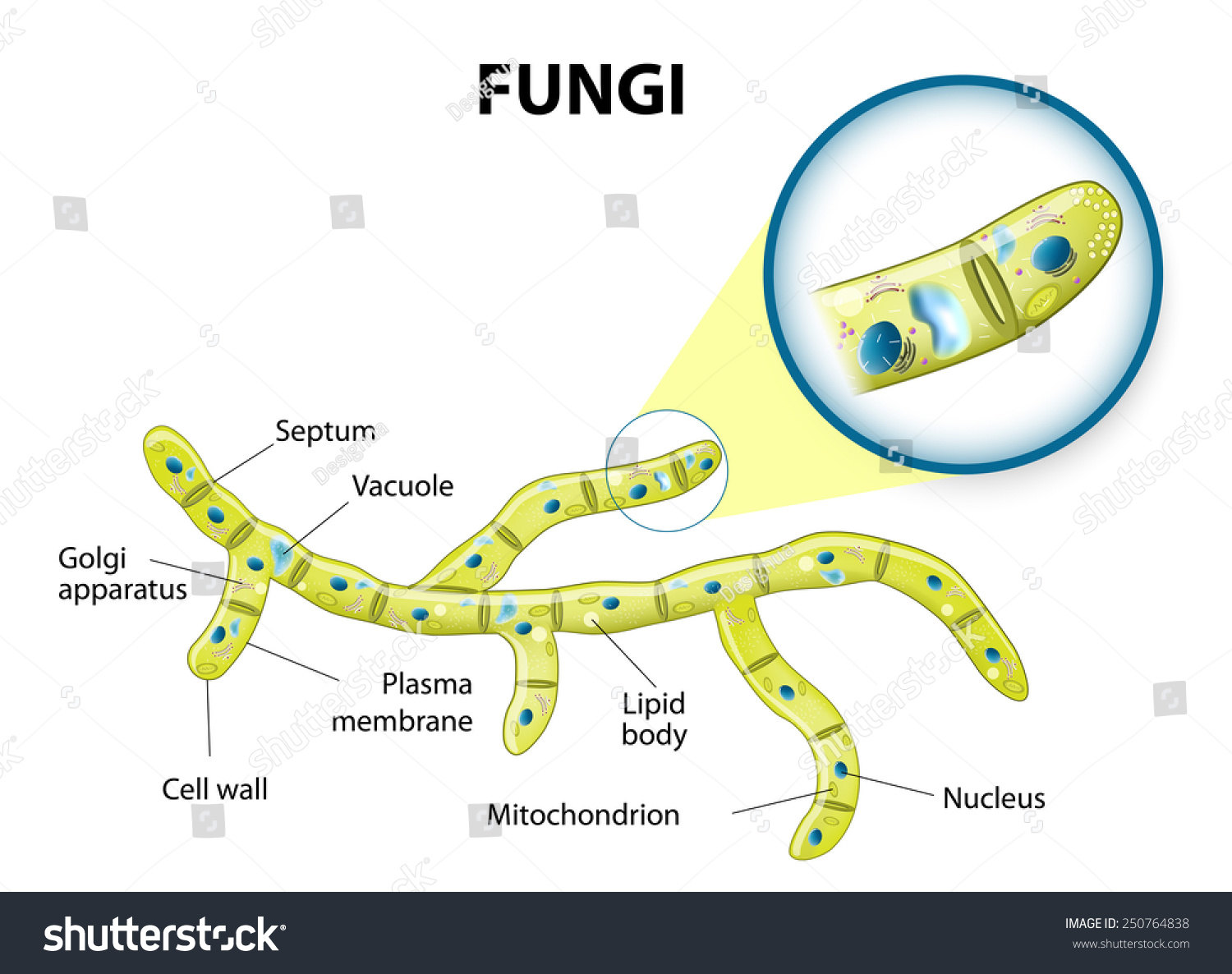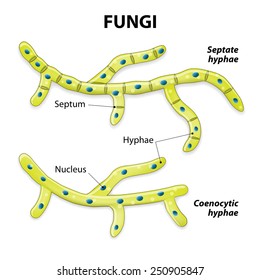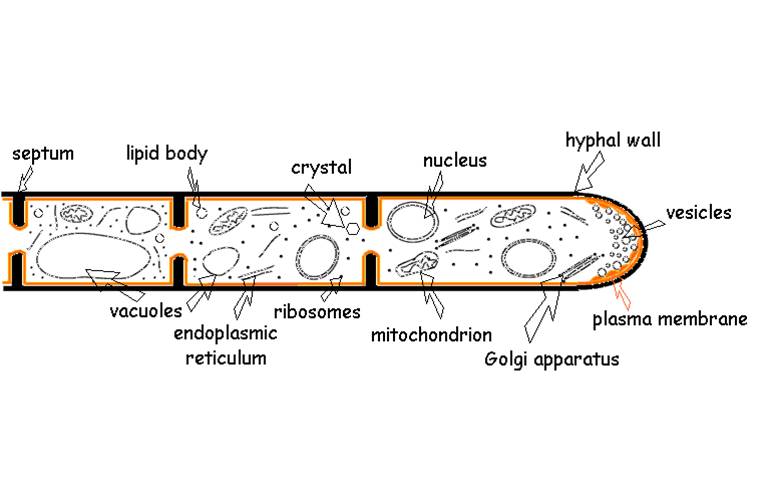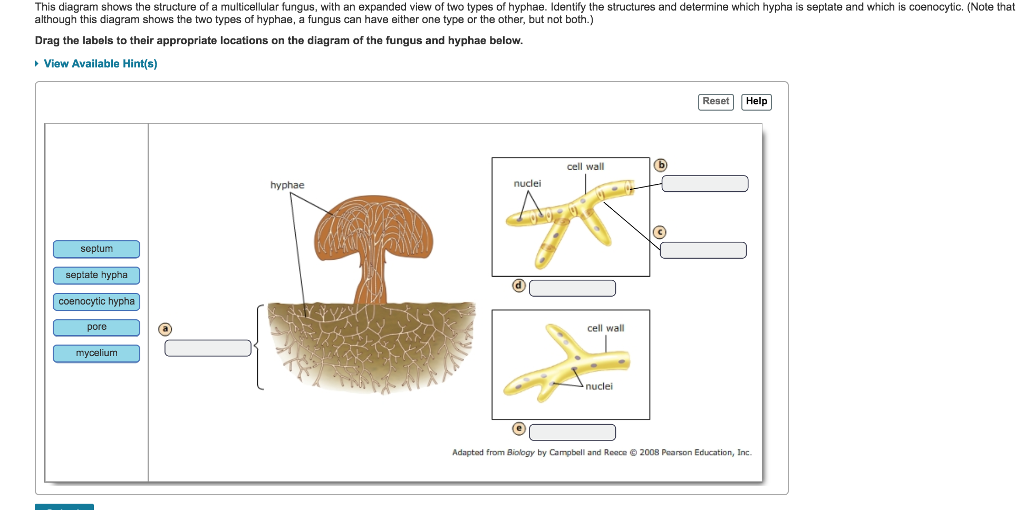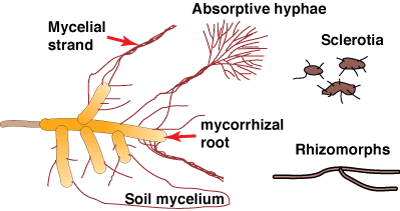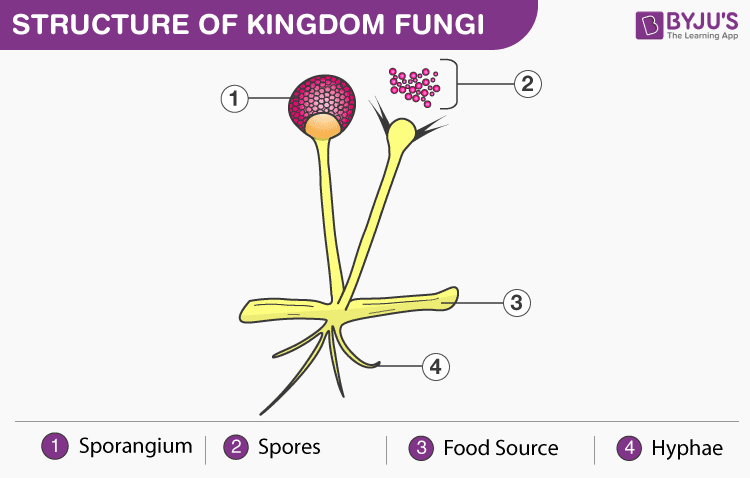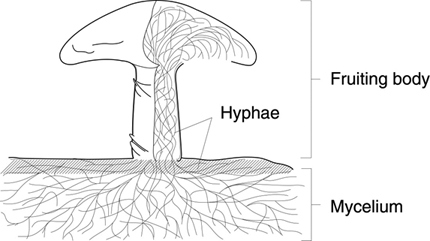Fungal Hyphae Diagram
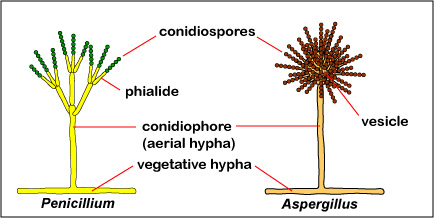
While not all fungi form mushrooms most do form a network of hyphae tube like structures that allow the fungus to search out and absorb new food sources.
Fungal hyphae diagram. Non septate hyphae are generally single cell organisms. If the fungus happens to pass into human alimentary canal it produces leucopenia called alimentary canal aleukia. Fungi are classified on the basis of morphology of the mycelium spore formation fruiting bodies and mode of life cycles. Note that although this diagram shows the two types of hyphae a fungus can have either one type or the other but not both.
Some fungi are pathogens for example the fungal infection which causes athletes foot. Yeasts multiply either by fission as observed. The mutually beneficial or symbiotic association of a fungus with the root of a higher plant is known as mycorrhiza. The perfect stage of fungus is gibberella fujikuroi.
In most fungi hyphae are the main mode of vegetative growth and are collectively called a mycelium. The shape is different from normal root tuberous nodulated coralloid. Asexual reproduction of fungi may take place by a variety of ways. Gibberellins are natural plant growth hormones.
The unicellular forms may multiply by cell division fission or budding. Root cap and root hairs. In the fructifications of higher fungi the hyphae become woven and intertwined into a compact mass. In such fungi anastomoses takes place between hyphae and their somatic cells fuse to produce dikaryotic cells eg agaricus peniophora etc.
Hyphae are comprised of hypha which are the long filamentous branches found in fungi and actinobacteria shown below. They run more or less parallel to one another and are composed of elongated cells. This diagram shows the structure of a multicellular fungus with an expanded view of two types of hyphae. The rest of the fungi is a body of fine threads weaving through the substrate and slowly digesting nutrients.
It is a soil fungus used in biological control of other fungi as it produces allelochemics against them. Identify the structures and determine which hypha is septate and which is coenocytic. The hyphae composing it do not lose their identity. In this article we will discuss about the asexual and sexual modes of reproduction in fungi with the help of diagrams.
The walls of the hyphae in the mass get fused and they lose their individuality. A hypha plural hyphae from greek fh huph web is a long branching filamentous structure of a fungus oomycete or actinobacterium. Hyphae are important structures required for growth in these species and together are referred to as mycelium.

